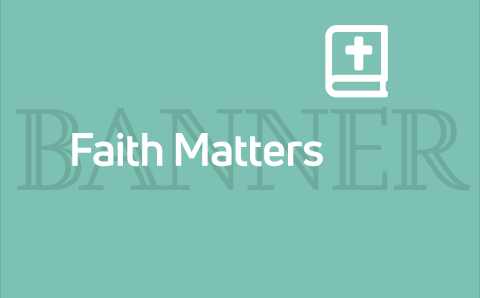Grab a pencil and open your Bible before you read these pages—you’ll need them in a minute. Then think about this: What’s special about Sunday, April 3, a.d. 33? Here’s a big hint: We’re soon going to celebrate what happened on that day.
Got it? Of course!
Sunday, April 3, a.d. 33, was the very first Easter. (There’s some argument about that among calendar experts, but we’ll go with that date.) So on April 3 you can say, “On this exact date, almost two thousand years ago, Jesus walked out of his tomb.”
Before the first Easter, many people celebrated the new life of springtime. Now we celebrate new life . . . forever!
Celebrate Life . . . When?
Why do we always celebrate Easter in March or April? Look up the Bible passages and fill in the blanks.
- Jesus was in Jerusalem to celebrate ____________ (Mark 14:1).
- ____________ (same word as previous blank) was always held on the ____________ month (Exodus 12:2) of the Jewish year. That month is now called Nissan.
- On Jewish calendars, Nissan always occurs during the months we call March and/or April. So Easter always occurs in ____________ and/or ____________.
So far so good. You understand why Easter always takes place in March or April, right? But be careful with this next part. It’s a bit tricky.
Read the sentence below, and then decide whether it’s right or wrong.
Easter always takes place in spring.
___ right
___ wrong
If you checked “wrong”—you’re right!
The first Easter occurred during springtime in Israel. Easter occurs during spring in North America, Europe, and all northern countries (those that are north of the equator).
But southern countries (south of the equator) have opposite seasons. March and April are fall months in Australia, New Zealand, and most of Africa. So Easter there is always during autumn.
In March and/or April, only half of the world celebrates the new life of springtime. But the whole world can celebrate the new life forever of Easter!
What’s “Maundy”?
You’ve heard of Maundy Thursday, right? On the first Maundy Thursday, Jesus ate the Passover meal with his disciples and then washed their feet. But what does Maundy mean? Why is it called Maundy Thursday?
Take a minute to read John 13:34. Write at least the first five words of the verse on this line: ___________________________________________________________________________________________.
You wrote those words in English, didn’t you? If you lived many, many years ago, you probably would have written them in Latin. That’s because some of the very first Bibles were written in Latin. People understood Latin back then.
In Latin, verse 34 begins Mandatum novum, which means “A new command.”
Look at that word mandatum for a minute. You can see how mandatum could change to maundatum over hundreds of years. In English the word is shortened to Maundy instead of Mandatum Day. Even though the word changed a bit, it still stands for “command.”
What we call it isn’t all that important, but the new command is. What is that command? Fill in the blanks here:
A new command I give you: _____ one another. As I have _____ you, so you must _____ one another. (John 13:34)
Bunnies, Chicks, and Eggs?
For centuries, many people who live in northern countries have used bunnies, chicks, and eggs as symbols of Easter. They are reminders of the new life that pops up during spring. That’s why bunnies, chicks, and eggs are good symbols of new life.
Christians adopted these symbols for Easter but added a deeper meaning. We say that bunnies, chicks, and eggs remind us of new life forever . . . eternal life.
But what about a lamb instead of bunnies, chicks, and eggs? Read on.
The Paschal Lamb
Some European people use a lamb as an Easter symbol.
Paschal comes from the word Passover. So the lamb symbol at Easter isn't just any lamb. It’s the Passover Lamb, Jesus! That symbol comes straight from the Bible.
Look up these Bible passages and fill in the blanks:
- Go at once and . . . slaughter the ____________ ____________. . . . put some of the ____________ on . . . the doorframe. The Lord . . . will see the ____________ . . . and he will not permit the destroyer to enter your houses and ____________ ____________ ____________. (Exodus 12:21-23)
-
“Look, the ____________ of ____________, who takes away the ____________ of the ____________!” (John 1:29)
-
For Christ, our ____________ ____________, has been sacrificed. (1 Corinthians 5:7)
-
“Worthy is the ___________, who was ____________, to receive power . . . and honor and glory and praise!” (Revelation 5:12)
The lamb is really a Good Friday symbol, not an Easter symbol. But we can’t celebrate Easter before Good Friday. The paschal lamb is a symbol for the whole story.
We don’t really need a symbol for Easter. We have the real, living Jesus!
No Easter?
No major religion—except Christianity—believes that its leader rose from the dead. So all other religions follow a leader who is dead and buried.
Only Christians follow a leader who lives. Only Christians celebrate Easter.
And if Christ has not been ____________, your faith is ____________. (1 Corinthians 15:17) But Christ has indeed been ____________ from the ____________, the first-fruits of those who have fallen asleep. (1 Corinthians 15:20)
About the Author
Joanne De Jonge is a freelance writer and a former U.S. National Park Ranger. She attends West Valley Christian Fellowship in Phoenix, Ariz.







